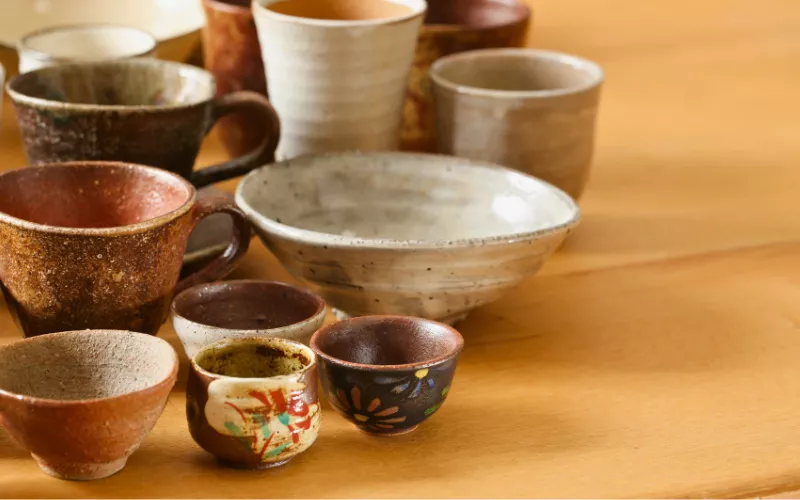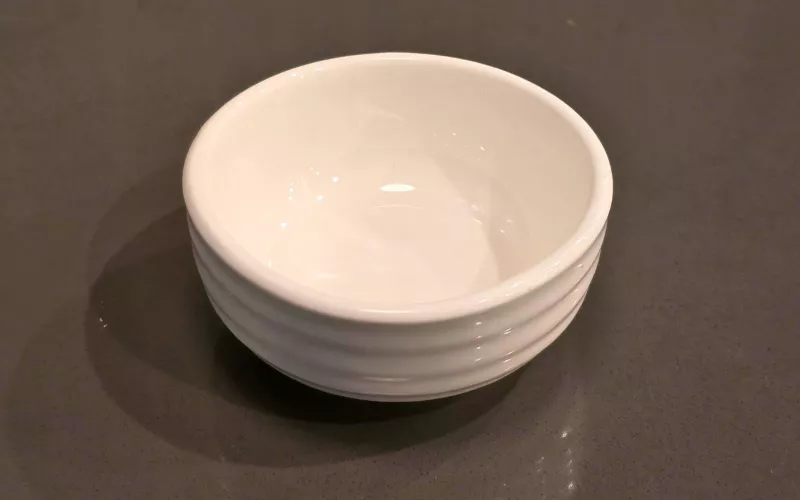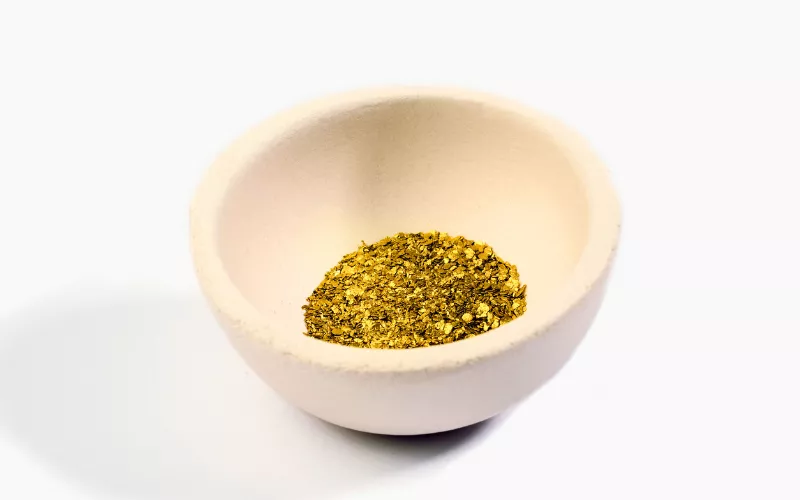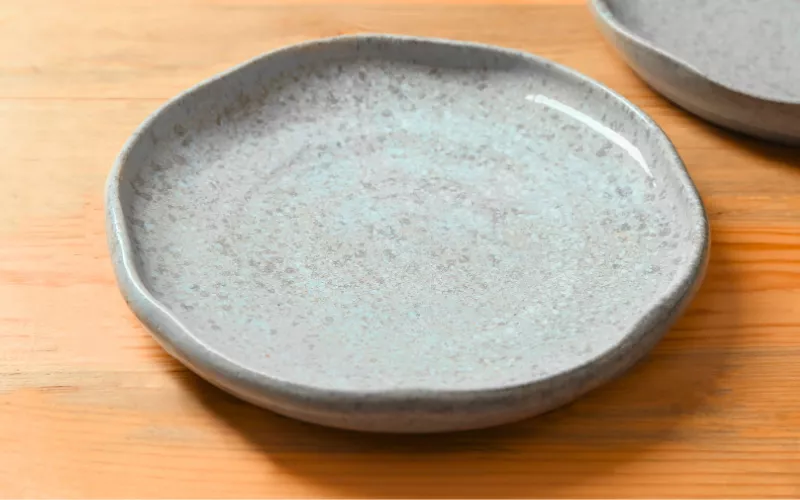
Alumina ceramic crucibles are a high temperature product used in applications such as induction heating with precision, purity and durability. As more industries focus on metallurgy and aerospace, this guide provides important specifications, shapes, and suppliers to enable you to select crucibles that improve the efficiency of thermal processes.
Alumina Ceramic Crucible

When you are looking for a crucible that holds up under harsh environments, alumina ceramic is the answer. It is manufactured out of 99.8% pure aluminum oxide, so it can withstand temperatures of up to 1800 °C, as well as be resistant to corrosive melts, which is precisely what your induction heating system requires.
Why professionals prefers alumina crucibles:
-
You prevent oxidation (not like metal crucibles)
-
Your molten materials stay clean (essentially zero reactivity)
-
You get reliable performance whether operating in vacuum, inert gas or open air
Pro Tip: When using semiconductor, request 99.95% purity alumina so that your materials are not trace contaminated.
Specifications and Properties

The table below is a technical snapshot comparing standard ceramic crucibles, alumina crucibles and other materials:
|
Property |
Alumina Crucible Value |
|
Max Temperature |
1600–1800°C |
|
Chemical Resistance |
High |
|
Purity |
Up to 99.8% |
|
Density |
3.8 g/cm³ |
|
Thermal Shock Resistance |
Moderate |
Such characteristics make alumina crucibles suitable in applications where close thermal control is required such as crystal growth, powder metallurgy as well as chemical synthesis.
Shapes and Sizes Available

Alumina crucibles come in a variety of formats relative to the process necessities. These shapes are meant to provide compensation or accommodations to a range of thermal loading, heating profile, and installations of induction heating units. The form and structure of a crucible has direct influence on the heat distribution, ease of installation/removal as well as compatibility with other equipments.
-
Standard Round Crucibles: The most universal and most used, the one to use when performing general melting, alloying and batch processing.
-
Rectangular Alumina Crucibles: It is designed to spread the heat with a large surface area and it is commonly accomplished in analytical laboratories and custom-made heating systems.
-
Alumina Crucible boats: Thin and shallow, great to use in a vacuum system, and horizontal furnace where uniform heating is desirable.
-
Conical and Cylindrical Variants: These are applied to directional melting and under the constraints of decreasing the thermal gradients when a closed or narrow chamber is used.
-
Lidded Crucibles: Lidded crucibles are used to hold volatile materials, and avoid contaminating high purity applications.
Choosing the right shape of crucibles is extremely critical to the performance of your system. Look at the internal volume, the thickness of the walls and how well the design suits your thermal and mechanical configuration. When a crucible fits well, it guarantees good and efficient results.
Alumina Crucibles Vs Other

|
Material |
Max Temp (°C) |
Chemical Stability |
Cost |
|
Alumina |
1800 |
Excellent |
Moderate |
|
Quartz |
1100 |
Moderate |
Low |
|
Zirconia |
2200 |
Very High |
High |
|
Graphite |
3000 (inert) |
Reactive in air |
Low |
Alumina offers an appropriate balance of thermal stability, price and material safety.
How To Choose Crucibles

The following are some of the factors you should consider before placing an order. Each one has a big impact on how good your crucible works and how long it lasts in induction heat applications.
-
Operating Temperature: You need to calculate so that the heat load of your system is equal to the crucible. Crucibles at temperatures lower than your process temperature have a tendency to crack or deteriorate too quickly.
-
Purity of Material: When a material is used in critical applications such as semiconductor or high precision metallurgy, a content purity of alumina of >99.5% is required. Lower purity crucibles may also cause release of contaminants upon heating, which results in poor product quality.
-
Shape and Capacity: Choose a model to fit your induction coil shape and large enough to process the material that you need. Take into account aspects like wall thickness, ratio between the depth and width and the handling ease.
-
Supplier Reliability: All suppliers are not equal in the type of quality or service that they may provide. Vet the suppliers such as Almath Crucibles, GORGEOUS Ceramics and other reputable manufacturers in regard to quality control procedures, delivery schedules and readiness.
-
Compatibility: Be sure the material of your crucible will not react chemically with your melt. This is of particular significance when dealing with reactive metals, fluxes or doped compounds.
-
Volume of Production: In cases where you are engaged in high volume production, then choose a crucible design with fast cycle times and short maintenance downtimes.
Maintenance Tips

Alumina crucibles are made in such a way that they are capable of resisting a hot state and corrosive fumes, but they should be handled properly. Conditions of maintenance are very important as far as maintaining their performance, structural strength, and life expectancy. Its want may produce a decay or cracking of even the purest crucibles, and contamination.
-
Cool slowly: Crucibles are supposed to cool gradually in between every heating process, to avoid thermal shock. The abrupt cooling may cause internal stress fractures that compromise on the strength.
-
Clean: Scrub off residues with soft-bristled brushes, or with ultrasounds baths cleaning. Rough cleaning may barb the inside, providing points of later contamination or tension.
-
Prevent thermal shock: It should never be tried to put cold materials into a hot crucible. The sudden change of temperature can cause cracking or structural immediate collapse.
-
Store and dry: Crucibles ought to be stored in dry, dust free places. Do not pile them up as this will cause chips or collision damages.
-
Before every use, inspect: Look at the surface to see the existence of cracks, erosion or deposits. A short check up schedule will help you avoid unexpected malfunctions and make your system run effectively.
Adopting these best practices, your replacement rate is going to decrease dramatically, and you will be able to keep your alumina crucibles functioning at optimal levels throughout many heating cycles.
Real Life Application

The U.S. aerospace brazing expert was working with scrap levels of 15% because of contamination, and their shift into 99.6% alumina crucibles yielded them measurable ROI:
What you are going to save by using Aluminum crucibles :
-
Twice as fast heating rates - Stability at 1800 Degrees C without crucible degradation
-
2X faster heating rates- it attained, 1800C stability without degrading the crucible
-
Reduced crucible replenishment and energy loss 38k in savings/year
The reason it (And Can) work for you:
-
With its even heat spreading, alumina increases your thermal efficiency (confirmed with IR thermography)
-
Your dimensional tolerances reduce - Crucible expansion was reduced to correspond to the Inconel CTE to 2%
-
Your ROI is shorter- 5 months payback (reported in Journal of Materials Processing Tech, 2023)
Conclusion
Selecting the appropriate alumina ceramic crucible should include more than temperature ratings. It involves choosing a material that will be able to withstand thermal stress, resistant to the chemicals and can be used repeatedly without breaking. A quality crucible adds stability to the process, and provides cleaner results.
These crucibles are designed to work in cleanrooms and precision casting, in that their purities are greater than 99.5%. They are of great value when coupled with the right supplier and handling. Alumina crucibles offer performance, reliability and cost efficiency in the long run in industries such as metallurgy and advanced ceramics.